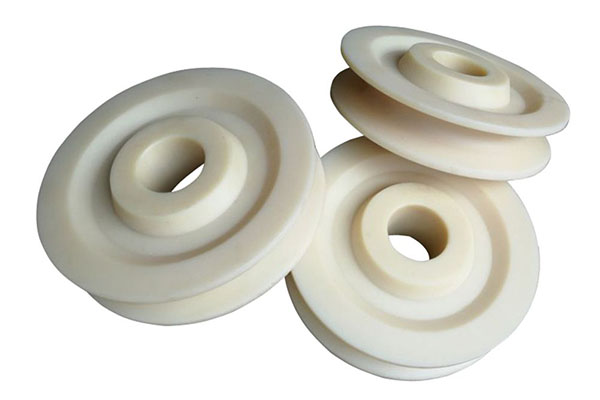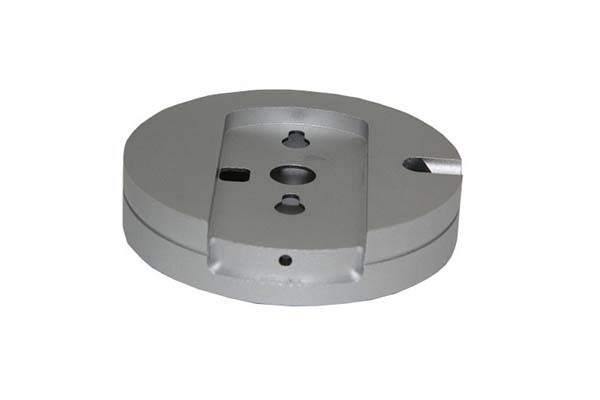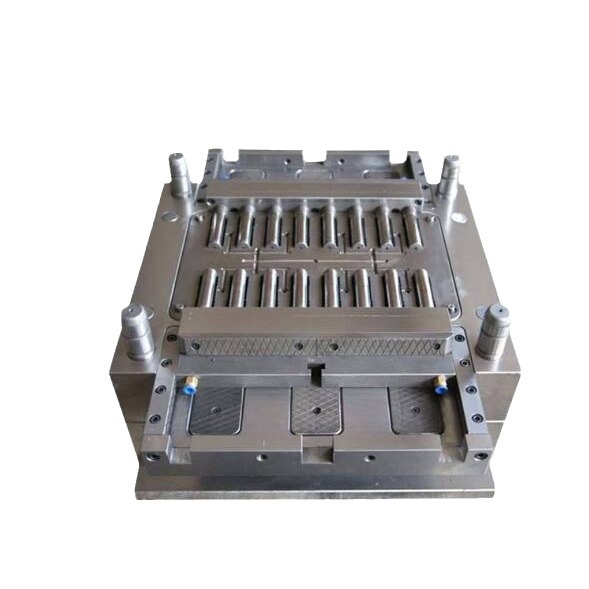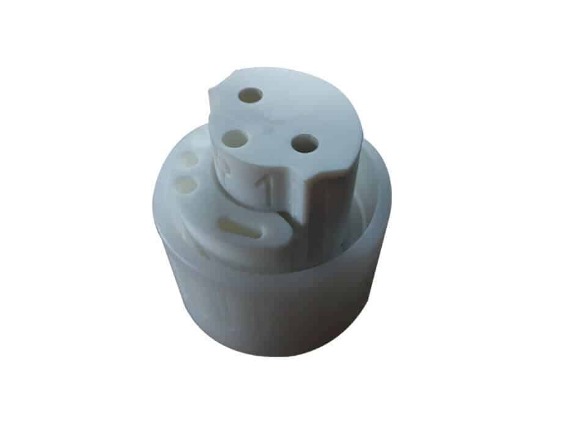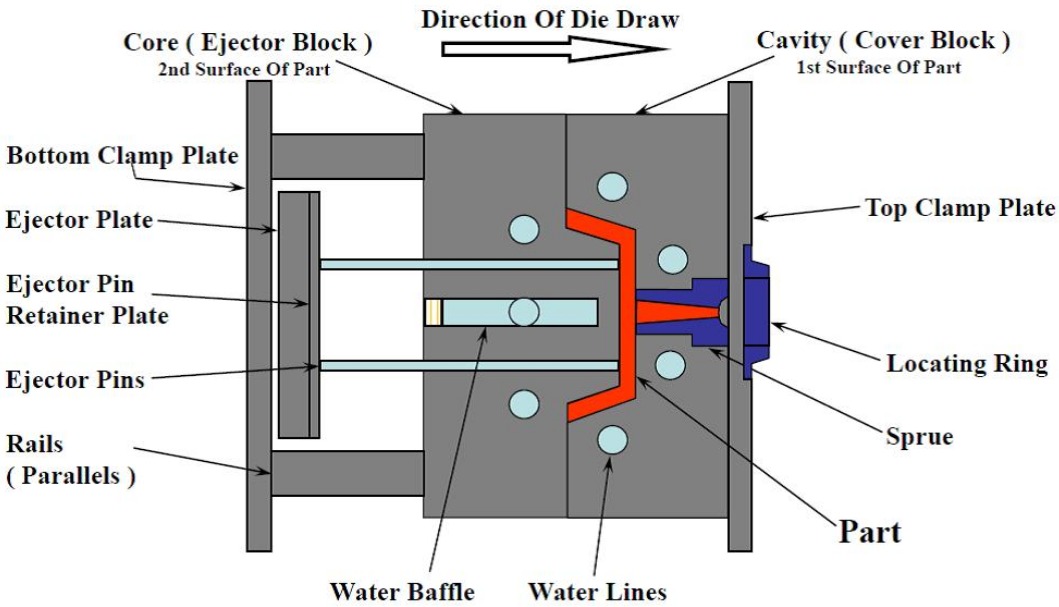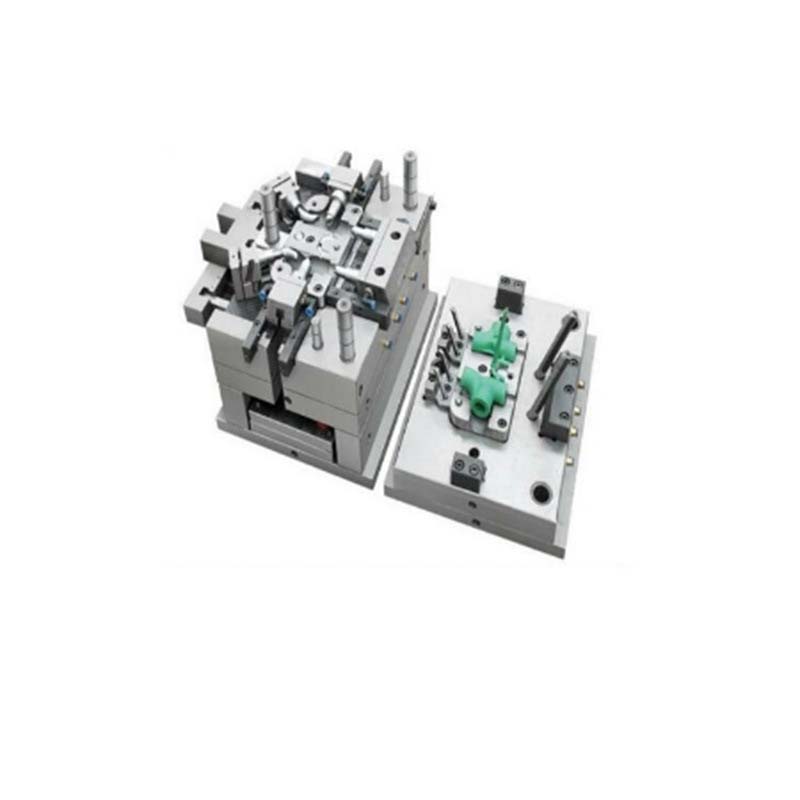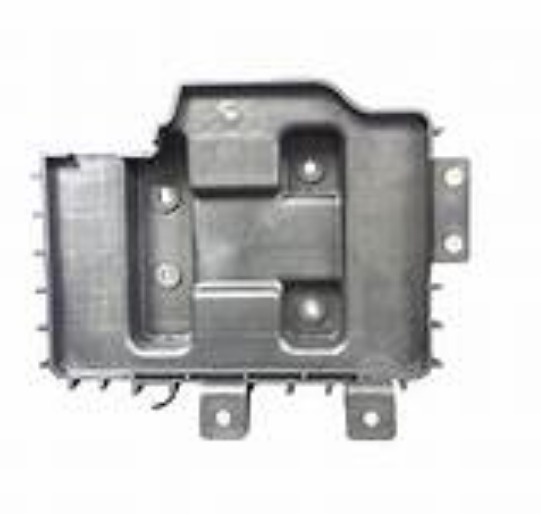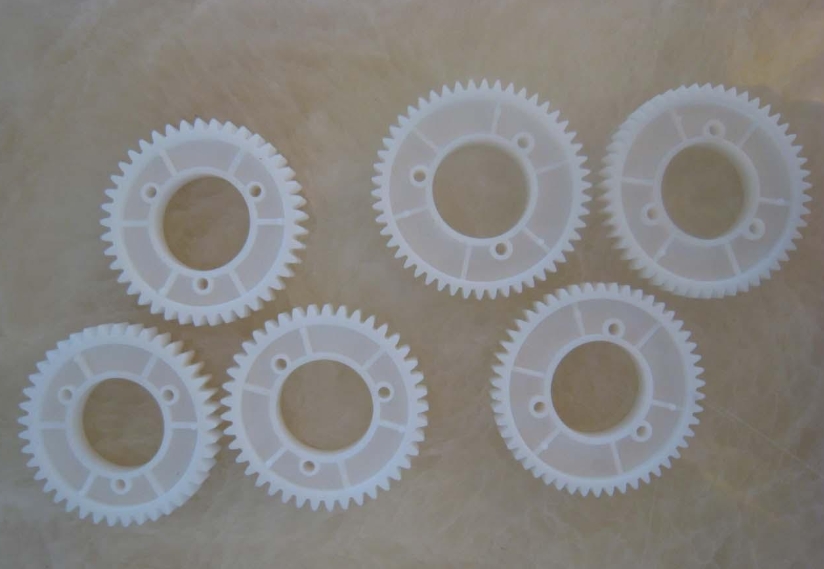Introduction
What is Snap Fit Injection Molding?
Snap fit injection molding is a manufacturing process that combines the principles of injection molding and snap fit design. Injection molding, as we know, is a widely - used method in the plastics industry where molten plastic is injected into a mold cavity under high pressure. Once the plastic cools and solidifies, it takes the shape of the mold, creating a precise and often complex - shaped part.
A snap fit, on the other hand, is a mechanical fastening method. It allows two parts to be joined together easily without the need for additional fasteners like screws, nuts, or adhesives. In snap fit injection molding, the snap fit features (such as hooks, latches, or tabs) are directly molded onto the plastic parts during the injection molding process.
This technique has become incredibly important in modern manufacturing for several reasons. Firstly, it significantly reduces assembly time. In traditional manufacturing, the use of separate fasteners requires additional steps for insertion, tightening, or curing of adhesives. With snap fits, parts can be quickly snapped together, streamlining the production line. For example, in the production of small consumer electronics like earbud cases, the time saved in assembly can be substantial when using snap fit injection molding.
Secondly, snap fit injection molding can lead to cost - savings. By eliminating the need for additional fasteners and reducing assembly time, companies can cut down on material costs and labor costs. According to industry reports, in some mass - production scenarios, the cost reduction can be as high as 30 - 40% compared to traditional fastening methods.
Moreover, snap fit injection molding offers design flexibility. Designers can create parts with complex geometries and integrate snap fit features in innovative ways. This allows for the creation of products that are not only functional but also aesthetically pleasing. It also enables easier disassembly for maintenance, repair, or recycling purposes, which is becoming increasingly important in the context of sustainable manufacturing.
Key Aspects of Snap Fit Injection Molding
Design Considerations
1. Material Selection
The choice of plastic material plays a pivotal role in snap fit injection molding. Different materials have distinct properties that can significantly impact the performance of snap fit components. For instance, materials like acrylonitrile - butadiene - styrene (ABS) are known for their high strength and impact resistance. This makes them suitable for applications where the snap fit parts need to withstand regular stress and potential impacts, such as in the housing of electronic devices. ABS also has good dimensional stability, which ensures that the snap fit features maintain their shape and functionality over time.
On the other hand, thermoplastic elastomers (TPEs) offer excellent flexibility. They are often used when the snap fit requires a certain degree of elasticity to facilitate easy assembly and disassembly. TPEs can bend and deform without breaking, making them ideal for applications like snap - on seals or flexible closures. Polypropylene (PP) is another commonly used material. It has a good balance of strength, chemical resistance, and low cost. PP is frequently used in consumer goods, such as food containers with snap - on lids, due to its hygienic properties and ability to withstand repeated use.
2. Wall Thickness
Wall thickness is a critical factor in snap fit injection molding, affecting both product quality and production efficiency. If the wall thickness is too thin, the part may lack sufficient strength, leading to easy breakage, especially in areas with snap fit features that are subjected to stress during assembly and disassembly. For example, in a small plastic toy with snap - together parts, if the wall thickness of the snap arms is too thin, they may snap off easily when the toy is assembled by children.
Conversely, overly thick walls can cause several issues. It increases the amount of material used, raising production costs. It also prolongs the cooling time, which in turn reduces the production rate. A general rule of thumb for most plastics in snap fit injection molding is that the wall thickness should typically range from 1.5 - 3 mm. However, this can vary depending on the plastic material. For high - strength engineering plastics like polycarbonate (PC), a slightly thinner wall thickness of around 1.5 - 2 mm may be sufficient due to its inherent strength, while for more flexible materials like TPEs, a thickness closer to 2 - 3 mm might be more appropriate to ensure proper functionality of the snap fit.
3. Geometric Features
Geometric features such as snaps, undercuts, and latches are fundamental to the success of snap fit injection molding. Snaps are typically designed with a specific shape and angle to ensure a secure fit. For example, a common snap design includes a hook - like structure with a tapered profile. The angle of the taper is carefully chosen, usually between 5 - 15 degrees, to allow for easy insertion during assembly while providing a tight grip once in place.
Undercuts are areas of the part that are not in line with the main axis of mold opening. They are often used in snap fit designs to create additional retention points. However, molding undercuts requires special considerations. In some cases, side - action molds or movable cores are used to create and then release the undercut features. For example, in a plastic container with a snap - on lid that has an internal undercut for a better seal, a side - action mold mechanism is employed to form the undercut during injection and then retract to allow the part to be ejected from the mold.
Latches are another important geometric feature. They are designed to provide a positive locking mechanism for snap fit parts. A well - designed latch should have a clear engagement and disengagement mechanism. For instance, a latch may have a spring - loaded tab that snaps into a corresponding slot. The spring force should be carefully calibrated to ensure that the latch remains securely closed during normal use but can be easily released when needed.
[Insert a simple schematic diagram here showing a basic snap fit with a hook, an undercut, and a latch for better illustration]
Process Parameters
1. Temperature Control
Temperature control is crucial at every stage of the injection molding process for snap fit components. During the melting stage, the plastic material needs to be heated to its melting point to ensure proper flowability. For example, for ABS, the melting temperature typically ranges from 200 - 240°C. If the temperature is too low, the plastic will not melt completely, leading to poor flow and potential defects such as short shots (where the mold is not fully filled). On the other hand, if the temperature is too high, the plastic may degrade, losing its mechanical properties and causing discoloration or the formation of gas bubbles in the final product.
In the mold, the temperature also needs to be carefully regulated. A lower mold temperature can lead to faster cooling, which may cause the snap fit features to warp or develop internal stresses. For parts with snap fits, a mold temperature in the range of 40 - 80°C is often recommended, depending on the plastic material. This helps to ensure uniform cooling and dimensional stability of the snap fit components.
2. Pressure Settings
The injection pressure is the force applied to push the molten plastic into the mold cavity. A sufficient injection pressure is required to ensure that the plastic fills the mold completely, especially in complex areas with snap fit features. However, if the injection pressure is too high, it can cause flash (excess plastic that oozes out of the mold), damage to the mold, and high internal stresses in the part. For most snap fit injection molding applications, the injection pressure usually ranges from 50 - 150 MPa, depending on factors such as the complexity of the mold, the viscosity of the plastic, and the wall thickness of the part.
After injection, the 保压压力 (holding pressure) comes into play. The holding pressure is applied to compensate for the shrinkage of the plastic as it cools and solidifies. In snap fit components, proper holding pressure is essential to ensure that the snap fit features maintain their shape and dimensions accurately. If the holding pressure is too low, the snap fit may not have the correct tolerance, leading to a loose or unreliable fit. A typical holding pressure is around 30 - 80% of the injection pressure and is applied for a short period, usually 5 - 15 seconds.
3. Cooling Time
The cooling time is the period during which the molded part cools down and solidifies in the mold. It has a significant impact on the 尺寸精度 (dimensional accuracy) and 性能 (performance) of the snap fit component. If the cooling time is too short, the part may not be fully solidified when ejected from the mold, causing it to deform under its own weight or during handling. This can lead to inaccurate dimensions of the snap fit features, resulting in a poor fit.
On the other hand, an overly long cooling time can reduce production efficiency. The cooling time can be calculated using the formula:\(t = \frac{\delta^{2}}{4 \times \alpha}\)
where \(t\) is the cooling time, \(\delta\) is the wall thickness of the part, and \(\alpha\) is the thermal diffusivity of the plastic material. For example, for a common plastic like PP with a wall thickness of 2 mm and a thermal diffusivity of approximately \(1 \times 10^{-7} m^{2}/s\), the calculated cooling time would be:\(t=\frac{(2\times10^{- 3})^{2}}{4\times1\times10^{-7}} = 10s\)
This is a rough estimate, and in practice, other factors such as mold design, temperature differentials, and the presence of cooling channels also need to be considered when determining the actual cooling time.
Yigu Technology's Perspective
As a non - standard plastic metal products custom supplier, Yigu Technology highly values snap fit injection molding. With years of experience in the field, we understand the challenges and opportunities presented by this manufacturing process.
When it comes to design requirements from clients, our team of experts is well - equipped to handle complex geometries and unique snap fit feature designs. We have successfully worked on projects across various industries, from consumer electronics to automotive components. Our in - house design and engineering team conducts in - depth mold flow analysis and DFM (Design for Manufacturing) reviews before starting production. This ensures that the snap fit injection molding process runs smoothly, minimizing potential defects such as warping, flashing, or improper snap - fit functionality.
In terms of material handling, we have a wide range of plastic materials in our inventory and can also source specialized materials according to client needs. Our advanced production equipment and strict quality control system enable us to maintain high - precision manufacturing, meeting the tightest tolerances required for snap fit components. Whether it's a small - scale prototype or a large - scale production run, Yigu Technology is committed to delivering high - quality non - standard plastic products with excellent snap fit performance.
FAQ
1. What are the common material choices for snap fit injection molding?
Common materials include ABS (acrylonitrile - butadiene - styrene) known for high strength, impact resistance, and dimensional stability, suitable for electronic device housings. TPEs (thermoplastic elastomers) offer excellent flexibility, ideal for snap - on seals or flexible closures. Polypropylene (PP) has a good balance of strength, chemical resistance, and low cost, often used in food containers with snap - on lids. Polycarbonate (PC) is strong and can have a relatively thinner wall thickness in snap fit designs, suitable for applications requiring high - strength and heat - resistant snap fit parts.
2. How can we ensure the dimensional accuracy of snap fit parts?
To ensure dimensional accuracy, precise temperature control during the injection molding process is crucial. Maintaining the correct melting and mold temperatures helps prevent warping and internal stresses. Appropriate pressure settings, including injection and holding pressure, are also necessary. The injection pressure should be sufficient to fill the mold but not too high to cause damage or defects. The holding pressure compensates for plastic shrinkage. Additionally, calculating and optimizing the cooling time based on the part's wall thickness and the plastic material's thermal diffusivity ensures the part is fully solidified before ejection, minimizing deformation.
3. Are there any special considerations for designing snap fits for large - scale production?
For large - scale production, cost - effectiveness becomes a more prominent factor. Designers should choose materials that are not only suitable for the snap fit functionality but also cost - efficient in large quantities. Simplifying the snap fit design as much as possible without sacrificing functionality can reduce mold complexity and production time. Mold durability is also crucial. The mold should be able to withstand the high - volume production runs without frequent repairs or replacements. Conducting thorough mold flow analysis and DFM (Design for Manufacturing) reviews before production can help identify and address potential issues early on, ensuring smooth large - scale production.
